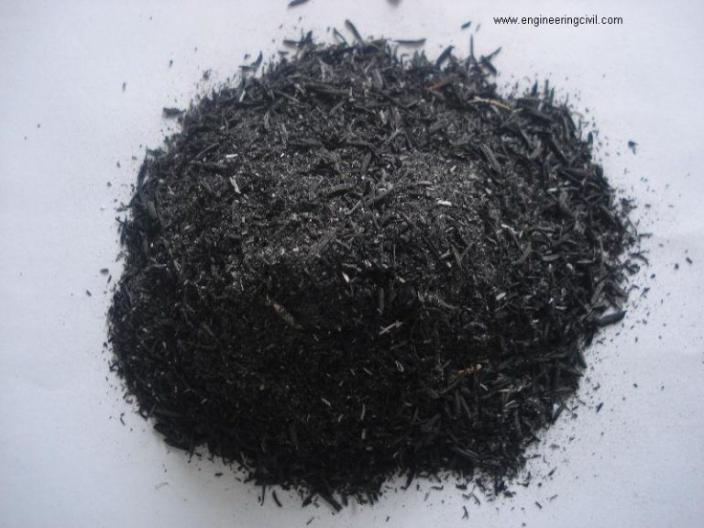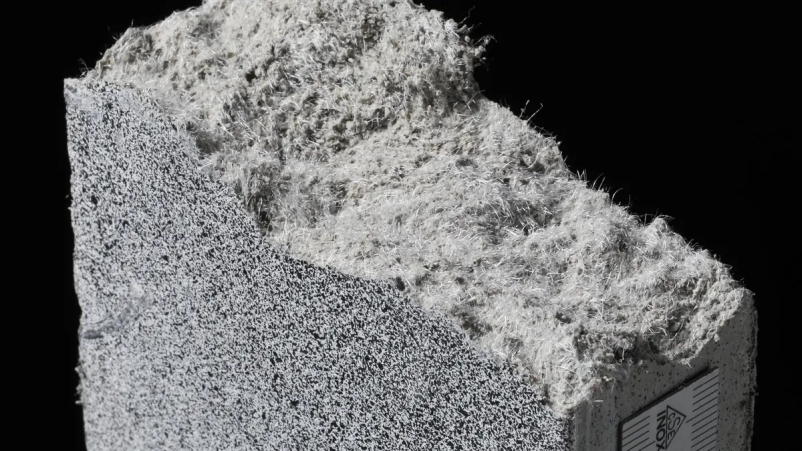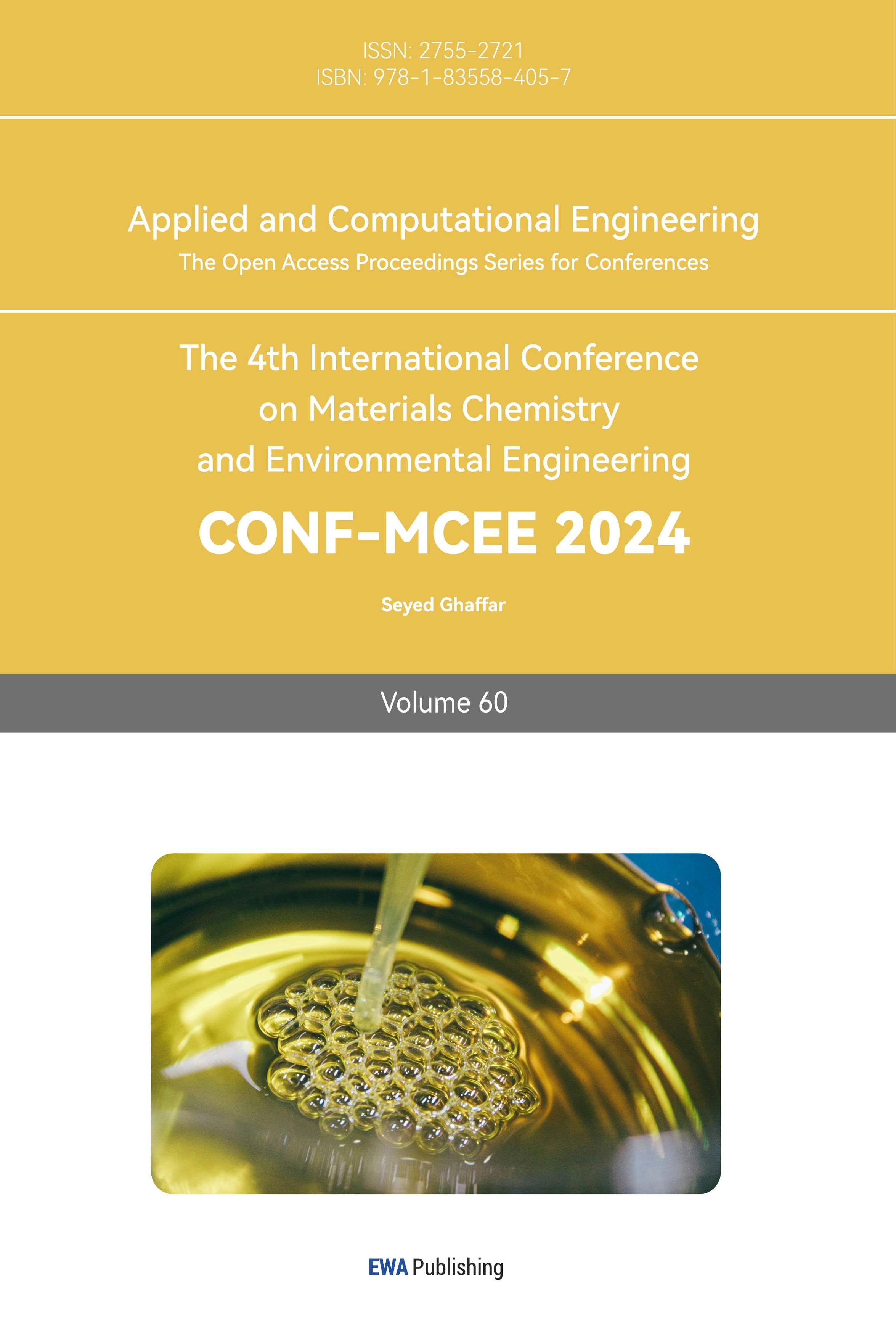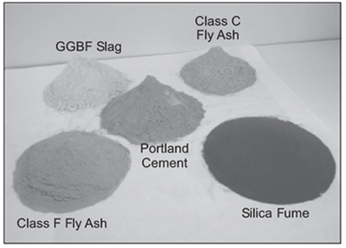1. Introduction
The construction of bridges has long been essential for connecting communities and developing economic growth. However, the environmental impacts of bridge construction, including habitat disruption, pollution, and resource depletion, have raised concerns in an era of heightened environmental awareness. As populations grow and infrastructure demands increase, developing and implementing sustainable practices to mitigate these adverse effects is imperative.
Material optimization plays a pivotal role. This involves utilizing advanced engineering techniques to minimize the consumption of steel, concrete and other building resources. These innovations allowed the bridge to be built with the same carrying capacity, but with greatly reduced materials. In addition, lightweight materials such as composite materials can further reduce the ecological footprint of bridge construction. Streamlining the construction process is another key area of exploration. Through careful project planning, the implementation of prefabricated components and efficient construction methods, the damage to the environment and the community is minimized. These practices cannot only reduce emissions from construction equipment, but also reduce energy consumption, resulting in a greener built landscape. In addition, integrating green design principles into the construction of Bridges means that these vital infrastructures are in harmony with the natural environment. In this paper, energy-saving building materials and related technologies in bridge construction are studied in order to realize sustainable bridge construction based on environmental protection.
2. Design optimization
Bridges have long been vital infrastructural elements, enabling the efficient movement of people, goods, and services. However, as society faces pressing environmental concerns, it is imperative that the bridge design need to be reevaluated. Thoughtful bridge design can not only serve its fundamental purpose but also minimize environmental impact through the reduction of material requirements, the streamlining of construction processes, and the incorporation of green design principles. In this part, how these three aspects of bridge design can be harmoniously integrated to promote sustainability and protect the fragile ecosystems will be explored.
2.1. Reducing material requirements
One of the most significant ways thoughtful bridge designs can contribute to environmental conservation is by reducing the excessive use of construction materials. This entails optimizing the structural design to minimize the amount of steel, concrete, and other resources needed for construction. Modern engineering techniques, such as the use of high-strength materials and innovative geometries, allow engineering to achieve the same load-bearing capacity with fewer materials. Additionally, the implementation of lightweight materials like composites can further decrease the ecological footprint of bridge construction.
By curbing material requirements, the strain on natural resources and energy-intensive production processes can be alleviated. This not only reduces the carbon footprint of bridge construction but also helps conserve finite resources, such as iron ore and fossil fuels. Furthermore, it lessens the negative impacts associated with mining, refining, and transporting construction materials. As such, thoughtful bridge design plays a pivotal role in promoting sustainable resource management.
2.2. Streamlining construction processes
In addition to reducing material demands, thoughtful bridge design emphasizes streamlining construction processes. This involves careful project planning, prefabrication of bridge components, and the implementation of efficient construction methods. Prefabrication, for instance, allows to produce bridge elements in controlled environments, reducing waste and improving quality control. Moreover, employing construction techniques like modular assembly or incremental launching minimizes disruption to the surrounding environment and communities during bridge construction.
Efficient construction practices reduce the environmental disturbance associated with bridge building and save time and costs. Less time on-site means fewer emissions from construction equipment and reduced energy consumption. Furthermore, a shorter construction timeline mitigates the negative social and economic impacts that prolonged construction projects can have on local communities and ecosystems.
2.3. Incorporating green design principles
Thoughtful bridge design goes beyond mere resource reduction and efficient construction processes; it also embraces green design principles. These principles entail integrating environmentally friendly features into the bridge’s design and surrounding landscape. For example, green bridge design may involve the incorporation of wildlife corridors, native vegetation, or water management systems into the bridge’s structure.
By creating a bridge that harmonizes with its natural surroundings, the local ecosystems and biodiversity can be preserved and enhanced. Wildlife corridors allow animals to traverse otherwise impassable barriers, fostering genetic diversity and ecological resilience. Additionally, incorporating native vegetation can restore natural habitats, improve air quality, and reduce maintenance needs.
3. Materials selection
The quest for sustainable construction practices has led to a significant shift in the building industry, with a growing emphasis on eco-friendly and recycled materials as well as innovative composites. Four distinct materials and research findings provide insights into the multifaceted approach to reducing resource consumption and minimize waste in construction.
3.1. Supplementary cementitious material (SCM)
The first material underscores the importance of SCM, such as Pulverized Fly Ash (PFA) and Ground Granulated Blast Furnace Slag (GGBFS), in sustainable concrete production, as shown in figure 1.
Figure 1. Supplementary Cementitious Material [1].
By incorporating these SCM into blended cements, the industry can reduce cement content and mitigate the adverse environmental impacts of CO2 emissions associated with cement manufacturing. This approach not only conserves natural resources but also improves the structural properties of concrete, including compressive strength, flexural strength, and modulus of elasticity [2].
In the context of bridge construction, SCM like PFA and GGBFS can be used to replace a portion of the cement in the concrete mix. When designing the concrete for bridge components like abutments or piers, engineers can incorporate these SCM as a partial replacement for traditional cement. This not only reduces the environmental impact of cement production but also enhances the long-term durability and strength of the concrete used in the bridge. The improved compressive strength, flexural strength, and modulus of elasticity observed in research can contribute to the structural integrity and longevity of the bridge.
3.2. Sugarcane bagasse ash
The second material introduces Sugarcane Bagasse Ash as a partial cement replacement material which is shown in figure 2, stemming from the sugar industry’s by-products. This innovative use of waste material addresses both environmental concerns regarding waste disposal and the carbon footprint of cement manufacturing. The research findings suggest that bagasse ash can be a sustainable substitute for traditional cement, with the potential to reduce resource consumption without compromising the concrete’s strength [3].

Figure 2. Sugarcane Bagasse Ash [4].
In bridge construction, sugarcane bagasse ash can be incorporated into the concrete mix as a partial cement replacement material. This can be particularly advantageous for non-structural bridge components such as parapets and railings. By utilizing this waste material, the construction industry can reduce the environmental burden associated with both the sugar industry’s waste disposal and traditional cement production. This approach can enhance the sustainability of the bridge while maintaining adequate strength and durability for these non-load-bearing elements.
3.3. Construction and demolition waste (CDW)
The third material explores the utilization of CDW, particularly CDW brick powder, in creating lightweight alkali-activated mortar (AAM) with extruded polystyrene (XPS) aggregates. This approach not only repurposes waste materials but also offers a lightweight alternative for non-structural applications. The research demonstrates the material’s lower thermal conductivity, acid resistance, and potential for further optimization to enhance its mechanical properties, representing an innovative strategy to minimize resource consumption and waste generation [5].
To leverage CDW in bridge construction, the CDW brick powder can be used as a precursor for AAM for specific bridge components like sound barriers or decorative elements. By combining CDW brick powder with XPS aggregates, lightweight AAM can be created. This lightweight material can be applied in sections of the bridge where reduced weight is desired, such as cladding or aesthetic features. Its lower thermal conductivity can help with insulation, and its acid resistance ensures long-term durability, even in challenging environmental conditions.
3.4. Polyolefin fiber reinforced concrete (PFRC)
The fourth material delves into the adoption of PFRC as a substitute for traditional steel reinforcement. The figure 3 below shows inside view this material. This shift contributes to reducing or eliminating the need for reinforcing steel bars, thus conserving steel resources.

Figure 3. A view inside the polyethylene-fiber concrete [6].
The research emphasizes the sustainability gains achieved through PFRC, highlighting its cost competitiveness and superior performance in terms of social and environmental aspects [7]. In the construction of bridge decks and pavement, PFRC can be used as an alternative to traditional steel reinforcement. PFRC can be incorporated into the concrete mix to reduce or eliminate the need for steel bars in these components. This reduces resource consumption and minimizes the maintenance associated with steel corrosion. Although PFRC may have a lower compressive strength than traditional concrete, it can still meet the requirements for non-structural elements of the bridge, such as sidewalks, curbs, or aesthetic features.
3.5. TiO2-based building materials
The last material is TiO2-based building materials. It is a significant opportunity to enhance both the environmental and functional aspects of infrastructure. These innovative materials possess air purification, self-cleaning, and sterilization properties, offering potential energy-saving and emission reduction benefits in the construction of bridges. By adopting TiO2-based materials to not only improve air quality in the vicinity of the bridge but also to reduce the maintenance required due to their self-cleaning properties. However, in practical applications, key factors influencing the photocatalytic performance of TiO2-based materials must be considered. This includes environmental conditions, exposure to pollutants, and maintenance practices. Bridge construction projects could strategically incorporate these materials in areas with high pollution levels or where frequent cleaning is required, thereby harnessing their air purification and self-cleaning capabilities effectively [8].
Incorporating these materials and research findings into bridge construction aligns with sustainable building practices. While some materials may be better suited for non-structural elements due to their specific properties, others can contribute to the overall durability and longevity of the bridge while reducing its environmental footprint. In conclusion, these four materials and their respective research findings exemplify the construction industry’s commitment to sustainable practices. By incorporating eco-friendly and recycled materials, the resource consumption can be reduced and the waste can be minimized, paving the way for a more environmentally responsible and economically viable construction sector.
4. Energy-efficient construction techniques
Energy-efficient construction techniques are essential for sustainable building practices. In this part, the concept of bio-cementation and bridge self-power will be introduced. These techniques reduce environmental impact, lower long-term costs, and help combat climate change, making them increasingly standard in the construction industry for a greener and more cost-effective future.
4.1. Bio-cementation
The innovative concept of bio-cementation, harnessing the natural phenomenon of calcium carbonate precipitation through microorganisms, holds immense promise for sustainable bridge construction. This bioinspired green solution has garnered considerable attention in the construction industry due to its potential for soil stabilization and enhanced building construction. The selection and utilization of microorganisms, such as Sporosarcina Pasteurii, should be carefully considered. These microorganisms play a pivotal role in catalyzing calcium carbonate precipitation, thus aiding in strengthening soil and construction materials. Incorporating the most effective microorganisms and specific enzymes derived from them can significantly enhance the bio-cementation process [9]. Incorporate bio-cementation into the production process of construction materials used in bridge construction. Introducing microorganisms and enzymes into the materials, ensuring that the bio-cementation process is efficient and reliable.
4.2. Self-energy
The utilization of abundant mechanical vibration energy within the bridge road environment has emerged as a promising avenue for addressing energy needs in wireless sensor networks for bridge condition monitoring. Piezoelectric energy harvesting technology offers an efficient means of converting this mechanical energy into electrical power. A notable development in this realm is the creation of an autonomous energy harvesting system, specifically designed using cantilever beams to capture and harness the vibrational energy of the bridge.
Additionally, three distinct interface circuits were meticulously evaluated through a combination of simulations and experimental testing. Notably, the comparative results revealed that the Voltage Doubler (VD) interface circuit exhibited superior performance with reduced power loss. An innovative closed-loop control methodology was proposed, rooted in the VD circuit. This approach proved to be both straightforward and adaptive, with the added benefit of being self-powered. These characteristics make it highly suitable for energy harvesting applications in road environments, where simplicity and adaptability are key considerations. The culmination of these efforts resulted in the realization of an energy harvesting system based on the VD circuit, capable of generating an approximate power output of 0.8mW [10]. This achievement not only exemplifies the potential of piezoelectric energy harvesting for bridge condition monitoring but also underscores the practicality of self-sustaining, energy-efficient solutions in the broader context of smart infrastructure development.
5. Monitoring and compliance
Monitoring and compliance in bridge construction is a multifaceted process governed by a comprehensive regulatory framework. To effectively navigate this landscape, a strategic approach is essential. Environmental compliance begins with the mandatory requirement for an environmental impact assessment (EIA) for major construction projects. This initial step involves a thorough evaluation of potential environmental impacts, mitigation measures, and adherence to specific emission standards. Regular monitoring during construction ensures that activities align with approved EIA plans, and compliance with strict emission limits is enforced to minimize air and water pollution.
Firstly, structural safety and quality control are paramount in bridge construction projects. Adherence to standards outlined in documents is imperative. For examples, in China, the official document ‘‘Technical Specifications for Construction of Highway Bridges and Culverts’’ issued by the Ministry of Transport of the People’s Republic of China, provides comprehensive guidelines and specifications for the design, construction, and maintenance of highway bridges and culverts. It covers various aspects, including structural design, materials, construction methods, and safety standards, ensuring the quality and safety of bridge projects across the country.
Secondly, real-time monitoring and reporting have gained prominence, with technologies like Building Information Modeling (BIM) and structural health monitoring systems providing continuous oversight. While not mandated by law, these tools are increasingly incorporated into contracts to enhance transparency and accountability throughout the construction process.
6. Conclusions
This paper examines the multifaceted aspects of environmental protection in bridge construction and draws the following key conclusions:
(1) Thoughtful bridge design can significantly reduce material requirements, thereby conserving natural resources, reducing the carbon footprint of construction, and minimizing the negative impacts associated with material production. Modern engineering techniques and the use of innovative materials, such as high-strength composites, play a crucial role in achieving this reduction.
(2) Efficient construction practices, including careful project planning, prefabrication of bridge components, and the implementation of modular assembly or incremental launching techniques, can minimize environmental disruption and reduce energy consumption. These practices contribute to greener construction processes and shorter construction timelines.
(3) The use of innovative materials like SCM, Sugarcane Bagasse Ash, CDW, PFRC, and TiO2-based building materials in bridge construction can significantly reduce resource consumption and minimize waste. These materials offer environmentally responsible alternatives for various bridge components, from structural elements to non-load-bearing features.
(4) Bio-cementation and bridge self-powering systems offer innovative solutions to reduce environmental impact and lower long-term costs in bridge construction. Bio-cementation harnesses the natural process of calcium carbonate precipitation through microorganisms for soil stabilization, while bridge self-powering systems capture vibrational energy for electricity generation.
(5) Structural safety and quality control standards, such as technical specifications issued by relevant authorities, should be observed to ensure the integrity of bridge projects. Real-time monitoring technologies like BIM and structural health monitoring systems can enhance transparency and accountability throughout construction.
References
[1]. Nevada Ready Mix 2023 Supplementary cementitious materials -- what, why, & how? Retrieved on October 13, 2023. Retrieved from: https://www.nevadareadymix.com/concrete-tips/supplementary-cementitious-materials/
[2]. Samad S and Shah A 2020 Comparative Analysis of Flexural Strength and Modulus Elasticity of Sustainable Concrete Using Supplementary Cementitious Material (SCM) Preprints 11 1-10
[3]. Basha C, Diriba A, Fekadu H, Tamiru B and Biranu A 2022 Evaluating Bagasse Ash as Partial CementReplacementMaterial. Preprints 08 1-14
[4]. Singh K 2023 Experimental investigation on the effect of bagasse ash and rubber tyre waste in concrete Civil Engineering Portal - Biggest Civil Engineering Information Sharing. Retrieved on October 13, 2023. Retrieved from: https://www.engineeringcivil.com/experimental-investigation-on-the-effect-of-bagasse-ash-and-rubber-tyre-waste-in-concrete.html
[5]. Wan K T, Sivanathan A, Kastiukas G and Zhou X 2018 Acid Resistance of Lightweight Brick Powder Based Alkali Activated Material from Construction and Demolition Wastes Preprints 06, 1-12
[6]. Alberti M G, Enfedaque A and Gálvez J C 2017 Polyolefin fibres for the reinforcement of concrete. Retrieved on October 13, 2023. Retrieved from: https://www.intechopen.com/chapters/56038
[7]. Enfedaque A, Alberti M G, Gálvez J C, Rivera M and Simón-Talero J M 2018 Can Polyolefin Fibre Reinforced Concrete Improve the Sustainability of a Flyover Bridge? Preprint 10 1-18
[8]. Bai X Y, Meng H, Wu Q, Wei Y C and Zhang Y Q. 2023 TiO2-Based Photocatalytic Building Material for Air Purification in Sustainable and Low-Carbon Cities: A Review. Preprints 08 1-21
[9]. Khoshtinat S 2023 Advancements in Exploiting Sporosarcina pasteurii as Sustainable Construction Material: A Review. Sustainability Preprint 09 1-26
[10]. Li T, Zhang Y and Geng X 2017 An Adaptive Self-powered Piezoelectric Energy Harvesting Circuit and Its Application on Bridge Condition Monitoring Preprints 01 1-23
Cite this article
He,Y. (2024). Research on sustainable bridge construction based on environmental protection. Applied and Computational Engineering,60,105-111.
Data availability
The datasets used and/or analyzed during the current study will be available from the authors upon reasonable request.
Disclaimer/Publisher's Note
The statements, opinions and data contained in all publications are solely those of the individual author(s) and contributor(s) and not of EWA Publishing and/or the editor(s). EWA Publishing and/or the editor(s) disclaim responsibility for any injury to people or property resulting from any ideas, methods, instructions or products referred to in the content.
About volume
Volume title: Proceedings of the 4th International Conference on Materials Chemistry and Environmental Engineering
© 2024 by the author(s). Licensee EWA Publishing, Oxford, UK. This article is an open access article distributed under the terms and
conditions of the Creative Commons Attribution (CC BY) license. Authors who
publish this series agree to the following terms:
1. Authors retain copyright and grant the series right of first publication with the work simultaneously licensed under a Creative Commons
Attribution License that allows others to share the work with an acknowledgment of the work's authorship and initial publication in this
series.
2. Authors are able to enter into separate, additional contractual arrangements for the non-exclusive distribution of the series's published
version of the work (e.g., post it to an institutional repository or publish it in a book), with an acknowledgment of its initial
publication in this series.
3. Authors are permitted and encouraged to post their work online (e.g., in institutional repositories or on their website) prior to and
during the submission process, as it can lead to productive exchanges, as well as earlier and greater citation of published work (See
Open access policy for details).
References
[1]. Nevada Ready Mix 2023 Supplementary cementitious materials -- what, why, & how? Retrieved on October 13, 2023. Retrieved from: https://www.nevadareadymix.com/concrete-tips/supplementary-cementitious-materials/
[2]. Samad S and Shah A 2020 Comparative Analysis of Flexural Strength and Modulus Elasticity of Sustainable Concrete Using Supplementary Cementitious Material (SCM) Preprints 11 1-10
[3]. Basha C, Diriba A, Fekadu H, Tamiru B and Biranu A 2022 Evaluating Bagasse Ash as Partial CementReplacementMaterial. Preprints 08 1-14
[4]. Singh K 2023 Experimental investigation on the effect of bagasse ash and rubber tyre waste in concrete Civil Engineering Portal - Biggest Civil Engineering Information Sharing. Retrieved on October 13, 2023. Retrieved from: https://www.engineeringcivil.com/experimental-investigation-on-the-effect-of-bagasse-ash-and-rubber-tyre-waste-in-concrete.html
[5]. Wan K T, Sivanathan A, Kastiukas G and Zhou X 2018 Acid Resistance of Lightweight Brick Powder Based Alkali Activated Material from Construction and Demolition Wastes Preprints 06, 1-12
[6]. Alberti M G, Enfedaque A and Gálvez J C 2017 Polyolefin fibres for the reinforcement of concrete. Retrieved on October 13, 2023. Retrieved from: https://www.intechopen.com/chapters/56038
[7]. Enfedaque A, Alberti M G, Gálvez J C, Rivera M and Simón-Talero J M 2018 Can Polyolefin Fibre Reinforced Concrete Improve the Sustainability of a Flyover Bridge? Preprint 10 1-18
[8]. Bai X Y, Meng H, Wu Q, Wei Y C and Zhang Y Q. 2023 TiO2-Based Photocatalytic Building Material for Air Purification in Sustainable and Low-Carbon Cities: A Review. Preprints 08 1-21
[9]. Khoshtinat S 2023 Advancements in Exploiting Sporosarcina pasteurii as Sustainable Construction Material: A Review. Sustainability Preprint 09 1-26
[10]. Li T, Zhang Y and Geng X 2017 An Adaptive Self-powered Piezoelectric Energy Harvesting Circuit and Its Application on Bridge Condition Monitoring Preprints 01 1-23










